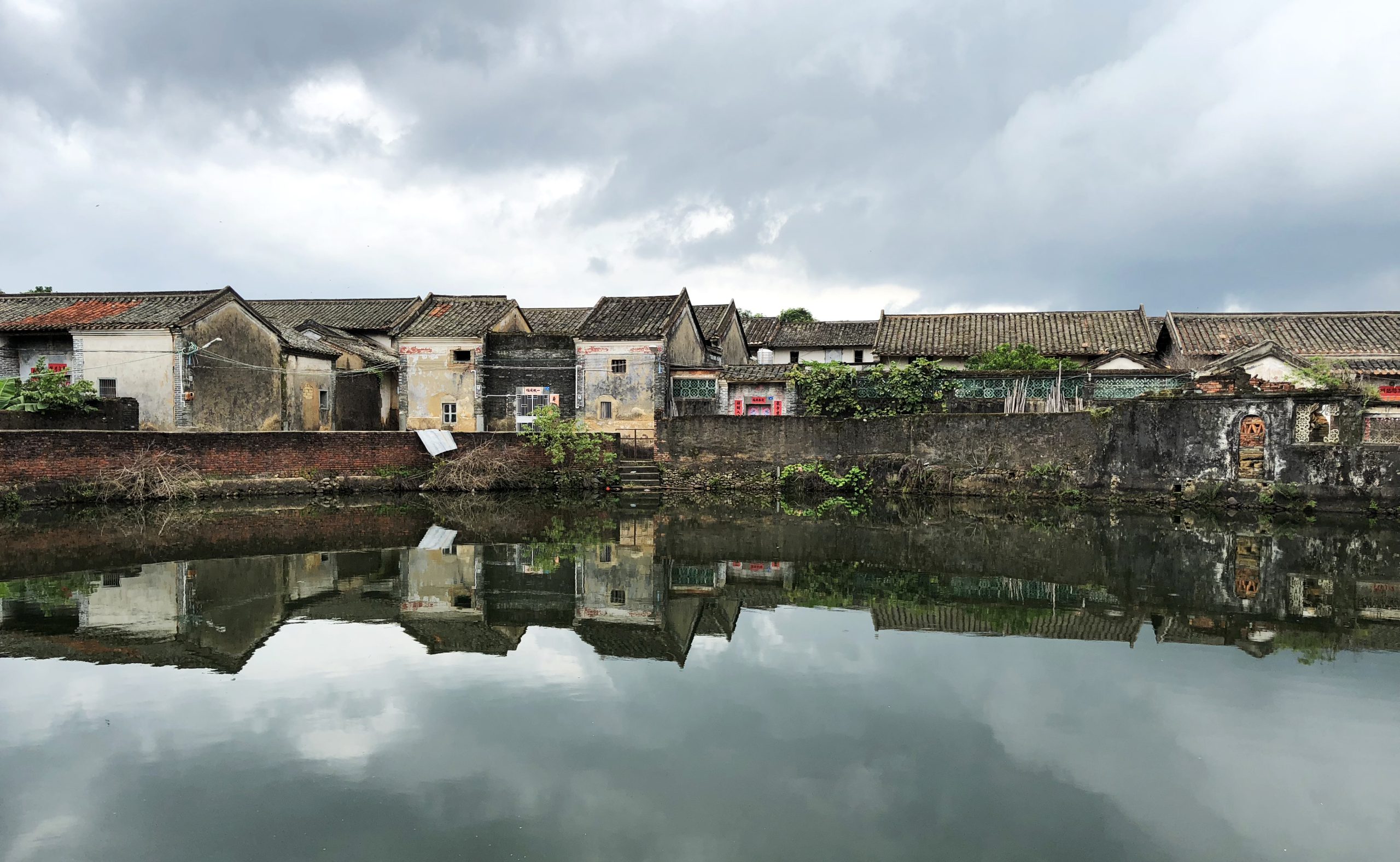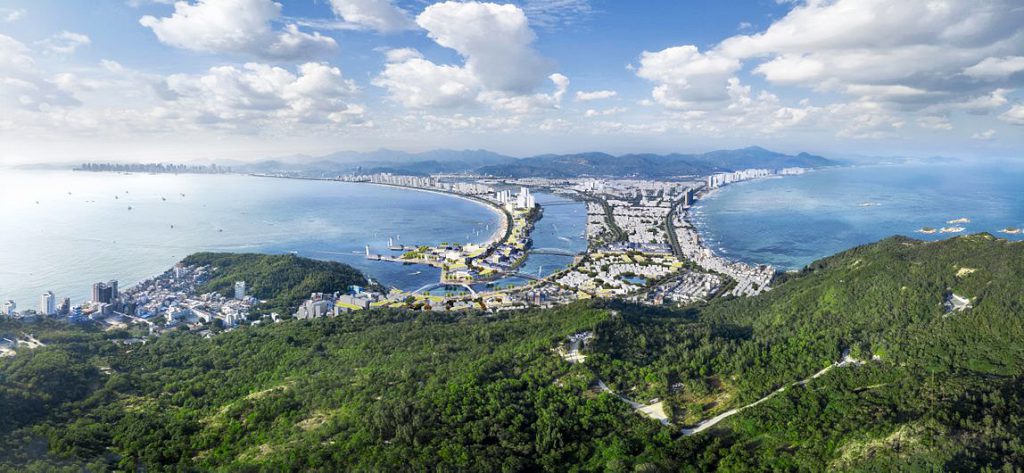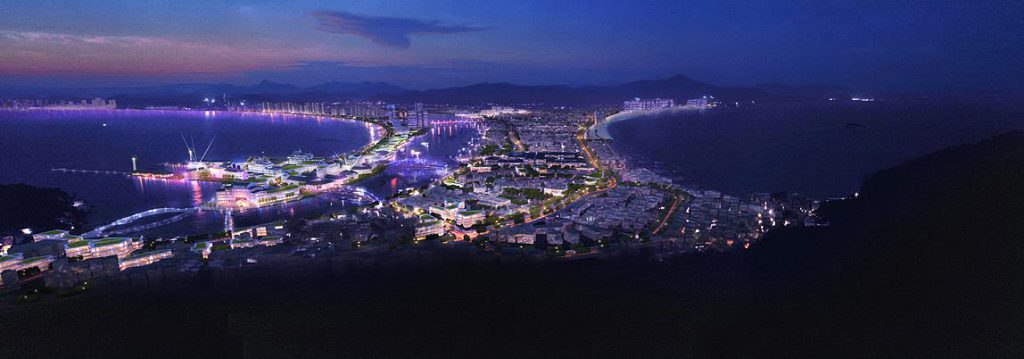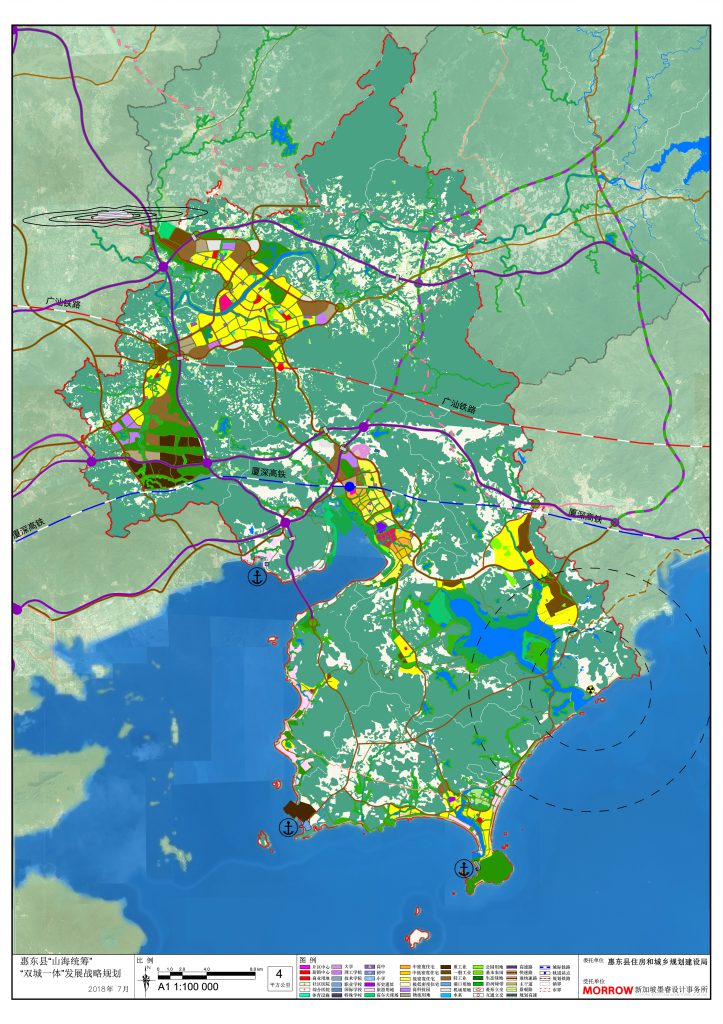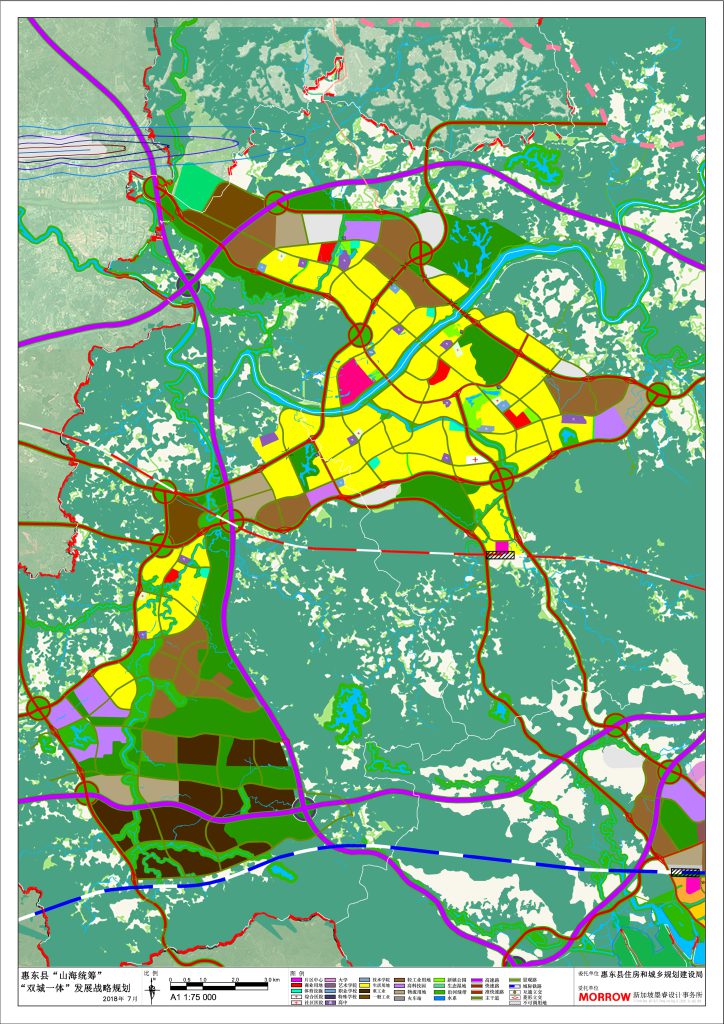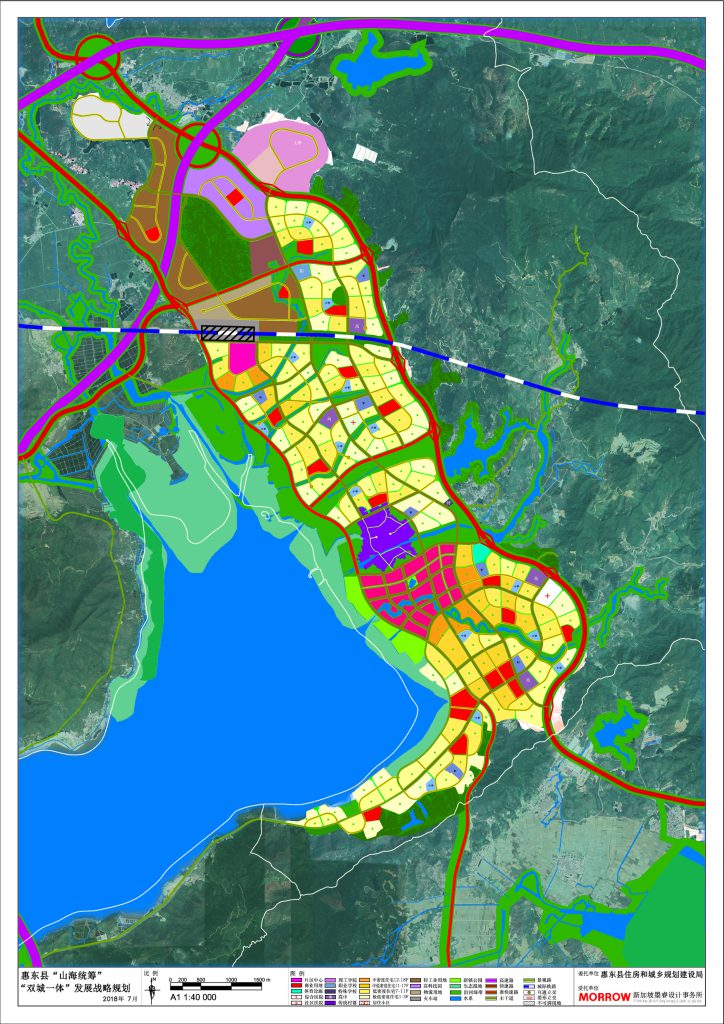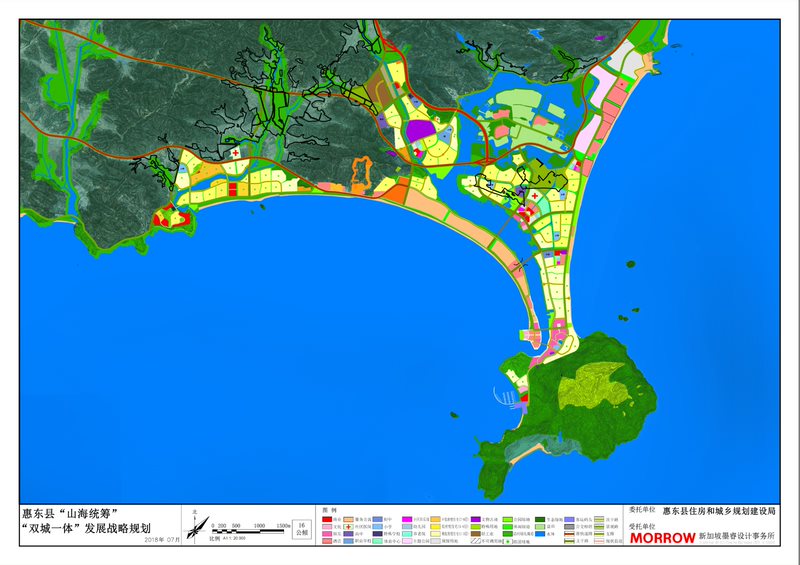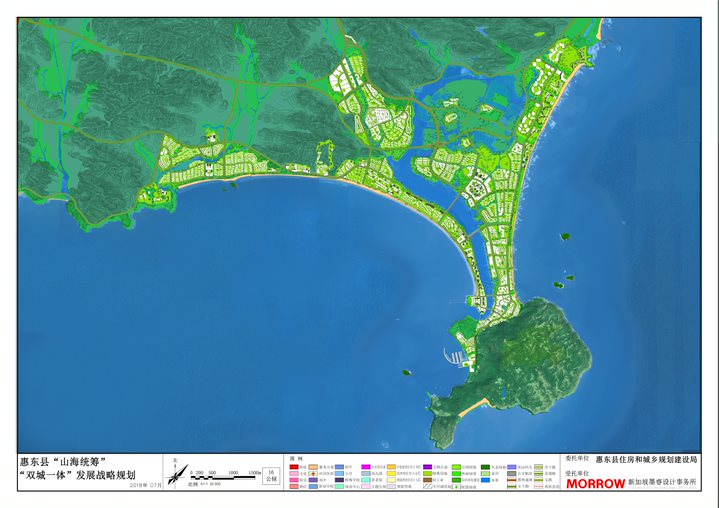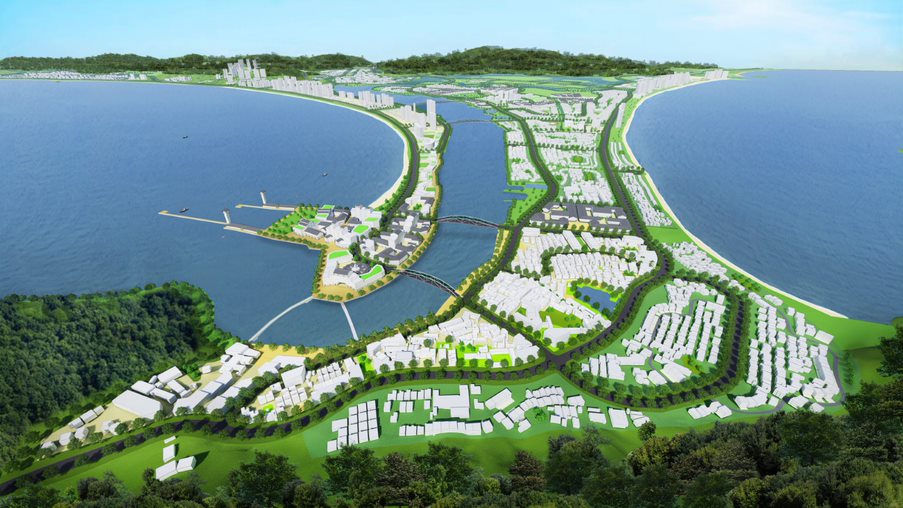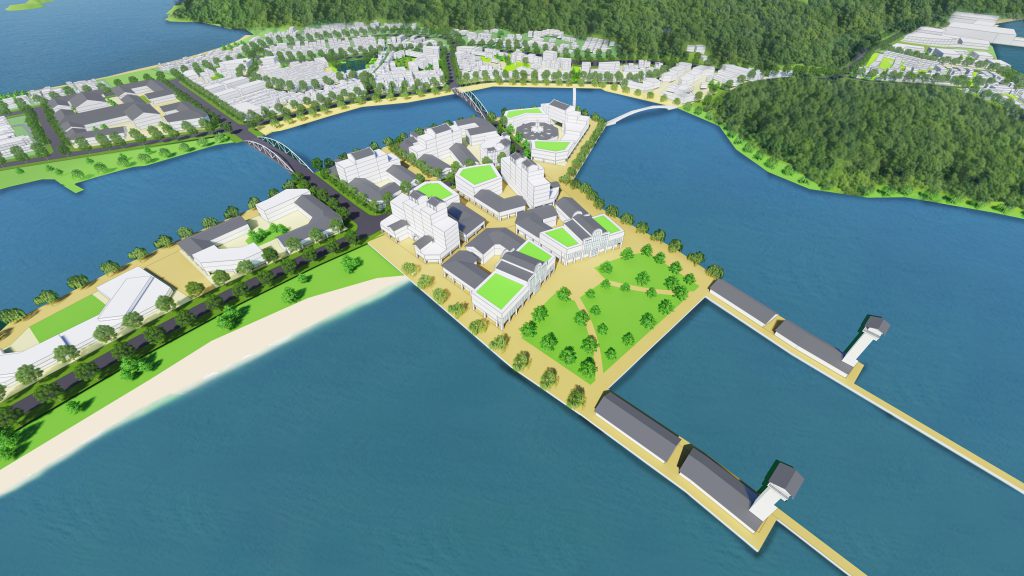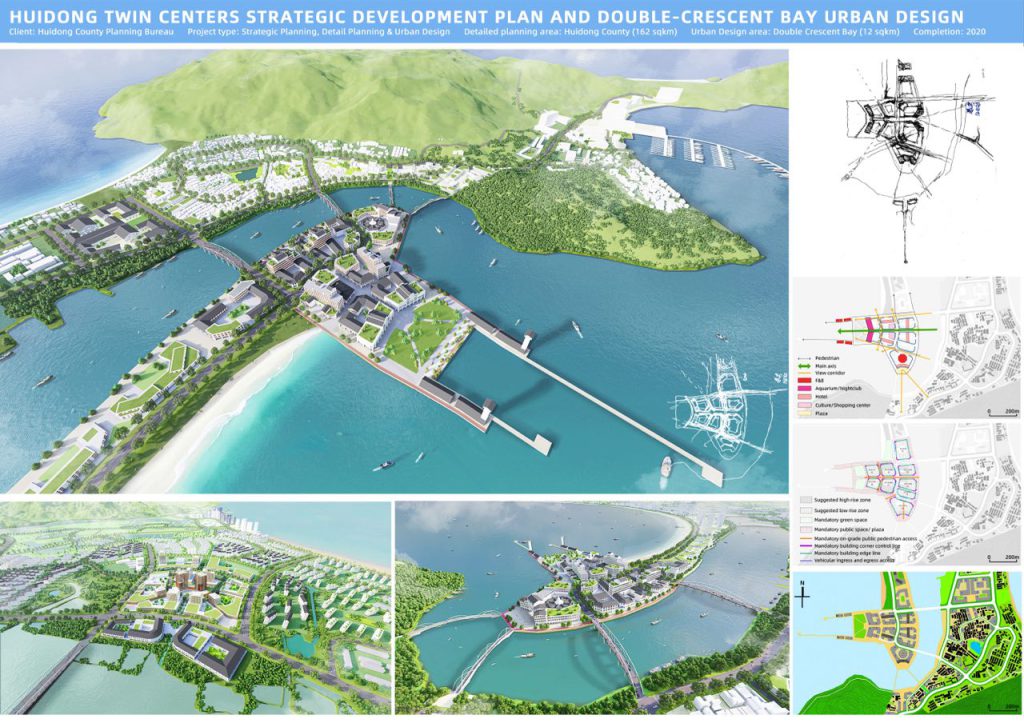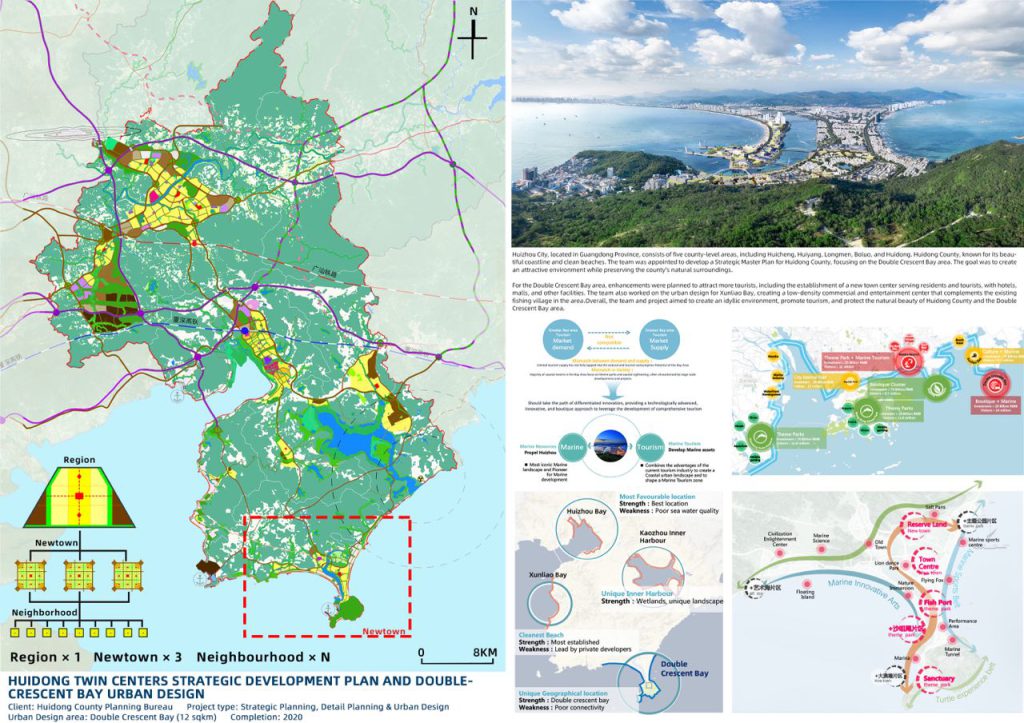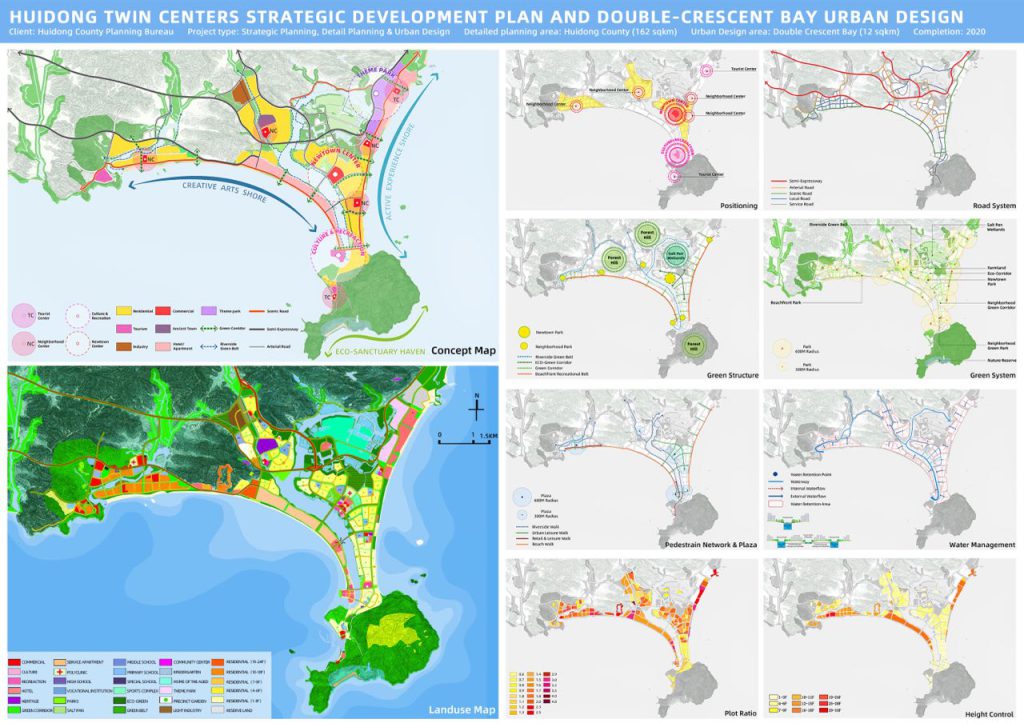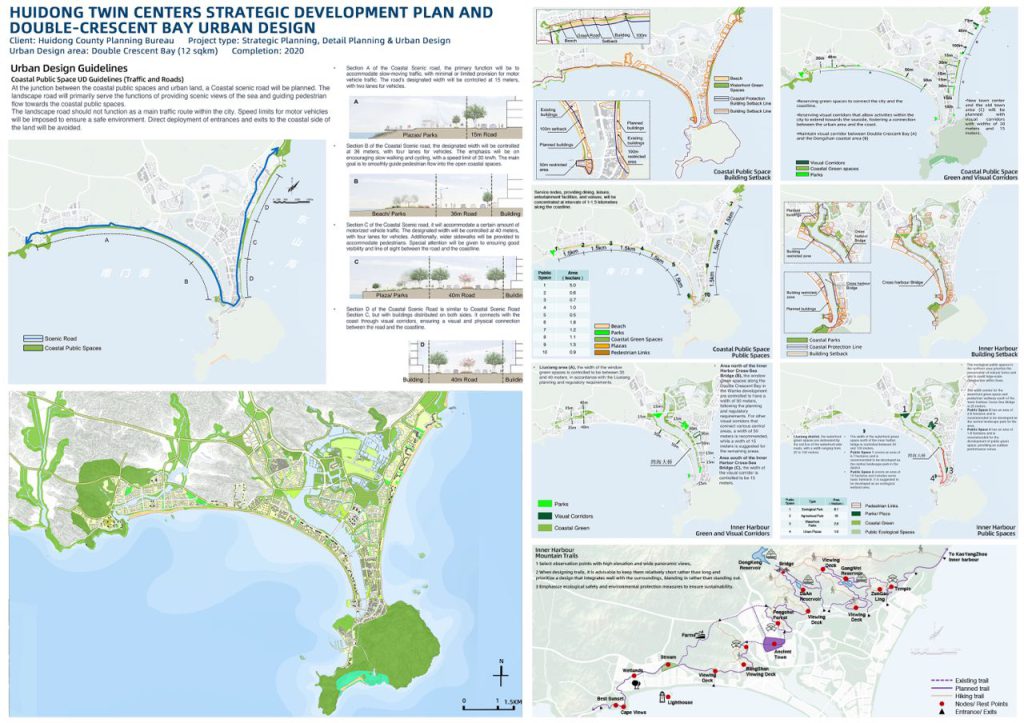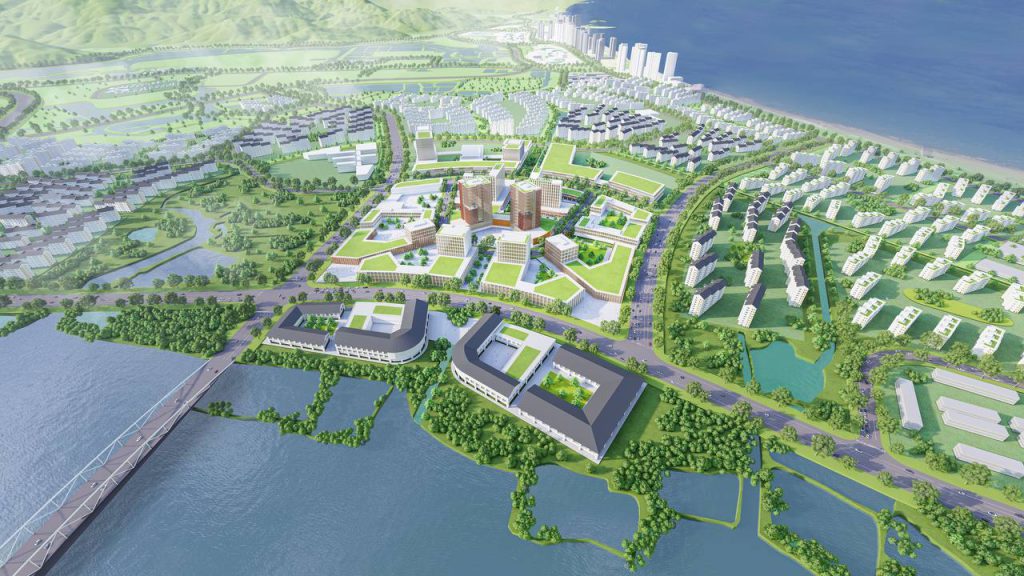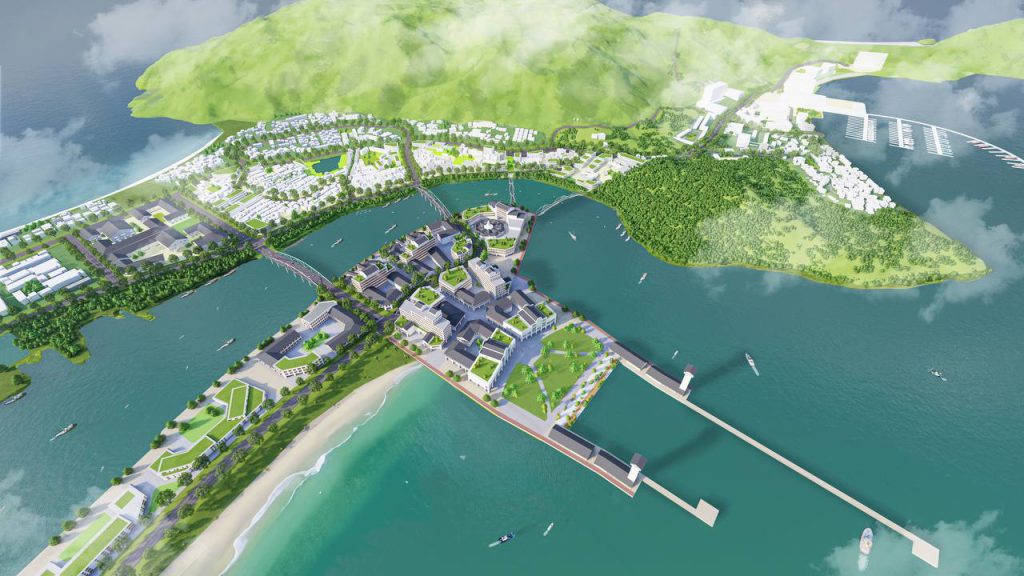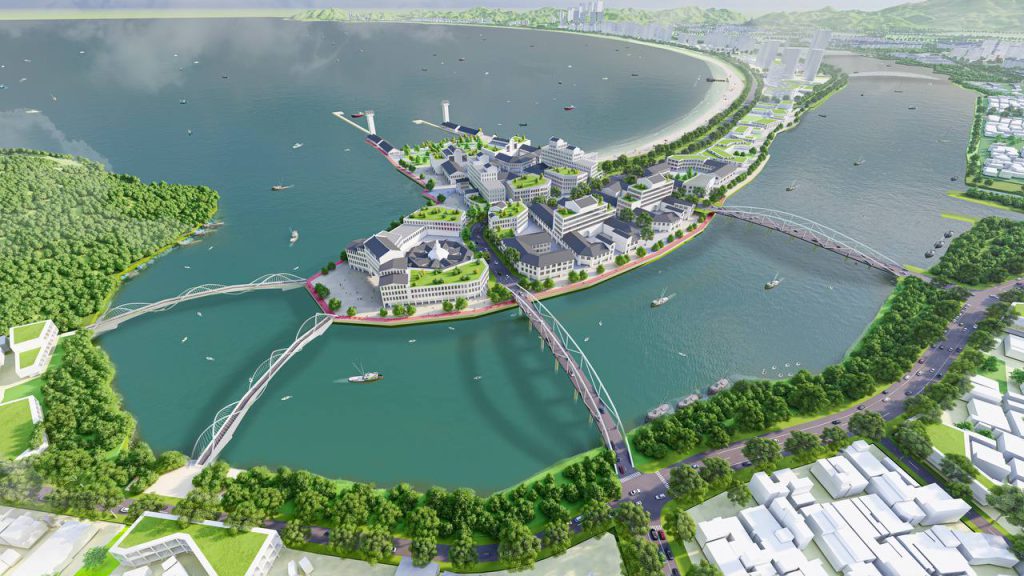Client: Huidong County Planning Bureau
Project type: Strategic Planning, Detail Planning & Urban Design
Planned Urban area: Huidong County 162 sqkm; Double Crescent Bay, 12 sqkm
Completion: 2020
Huidong County
Located in the Guangdong Province and east of the city of Shenzhen, Huizhou City consists of five county-level areas, comprising the districts of Huicheng and Huiyang, and the counties of Longmen, Boluo, and Huidong. Marked by hills, rivers, and a well-kept shoreline, the south of Huidong county has its coast facing the South China Sea, owing to its location in the southeastern region of Huizhou City.
In addition, this Chinese county boasts clean beaches and a national natural protection zone for sea turtles, which are also regarded as signs of good luck and longevity by the region’s natives. The Huidong Harbor Sea Turtle National Nature Reserve is currently the only protected bay for sea turtles within China. Traditionally, Huidong County has been a favourite holiday destination for tourists from Shenzhen and Hong Kong due to its proximity to these two cities.
Master planning and urban design
MORROW was appointed by the client to develop a Strategic Master Plan for Huidong County, and to carry out a detailed master plan and urban design for the double crescent bay area at the southern tip of Huidong County Peninsula. Located in the port town of Huidong, Double Crescent Bay is famous for its peculiar sea views. The aerial view of the bay resembles two new crescent moons, with Pinghai and Daya Bays on one side, and Honghai Bay on the other, similar with Hakodate City in Hokkaido, Japan.
The goal of this project was to create an idyllic environment to attract more tourists, while also protecting the natural environment of the county.
Creating a twin-centre development
A long-term strategic structural plan was first created by the team at MORROW for the county to allocate its key urban organs, such as the road and railway systems. It was a necessary preamble to decide on the population size and facilities for this new, designated tourism centre, in order to ensure access within the city remains smooth even as the population increases.
With the development of the Greater Bay Area, cities such as Guangzhou, Dongguan, Macau, and Huizhou, among others, would all be part of an integrated business and economic hub. Huizhou Bay, which includes part of Huidong, would thus have excellent potential for development.
Hence, in the long-term development strategic structural plan, the team from MORROW suggested creating a twin-centre development for Huidong County. Of this development, one of which will be the current central area of the county. The other will be the new centre of Renshan Town, which is part of Huizhou Bay. This way, access within the county will be further improved, thereby boosting any economic developments in the area.
The Double-Crescent Bay area
Next, a planning exercise had to be carried out for the Double Crescent Bay area, so named for its spectacular double bay feature in the peninsula surrounded by the sea on all sides. With the fine sand, relatively flat seabed, and crystal-clear waters of the beaches, it is unsurprising that many visitors enjoy the environment. However, the overall environment in the area had to be enhanced in order to attract more tourists to its 57-kilometre stretch of beaches that are about 200 metres wide.
Prior to this, there were no planned developments in the relatively untouched area. Therefore, a new town centre was first set up so as to serve both the residents and the tourists. This new town centre would then be used as a launchpad, containing hotels, malls, and other tourist facilities, as well as connecting visitors to other tourist attractions around the centre.
Following the completion of the Master plan, the team was requested to develop the urban design for Xunliao Bay at the Renping Peninsula, located at the southern tip of the county. Xunliao Bay is home to multiple generations of fishermen and the urban design covers an existing fishing port in Xunliao Old Town and a new Town centre.
The resulting proposal
In the proposal, a low-density, commercial and entertainment centre styled in a contemporary interpretation of the local architecture, was created by the team from MORROW. Hence, the end result was a romantic and intimate environment that complements the adjacent existing fishing village that the team had proposed to retain.
Artist Impressions
Project Plans
3D Images
SIP Award Submission Panels
3D Render
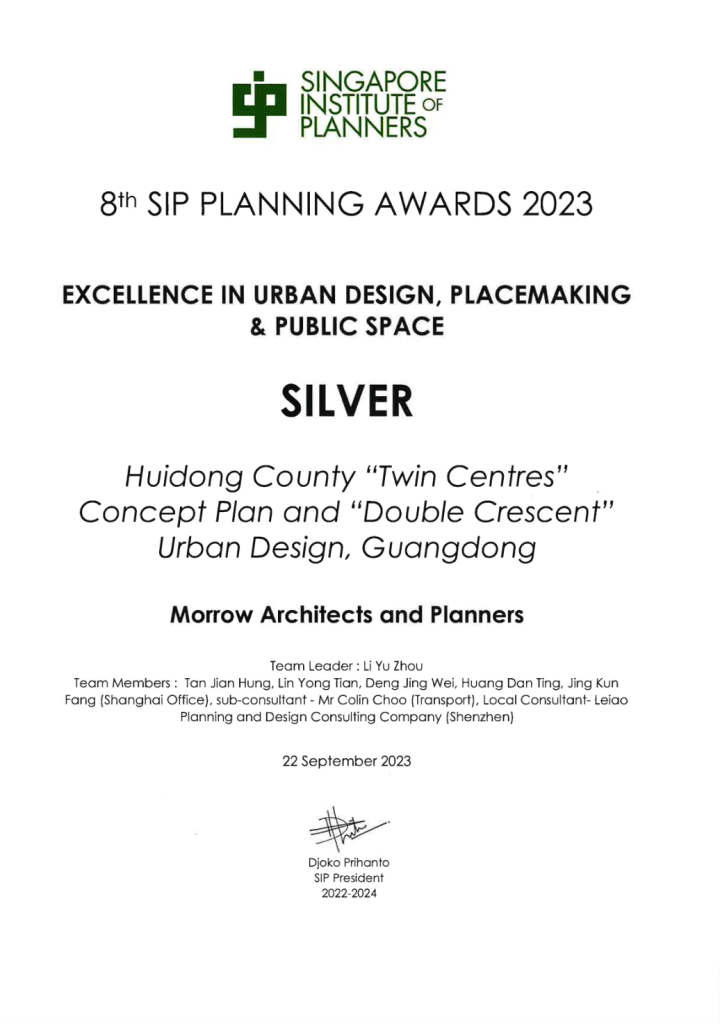
We’re proud to share that the Huidong County “Twin Centres” Concept Plan and “Double Crescent” Urban Design in Guangdong, has clinched the silver award at the Singapore Institute of Planners (SIP) Planning Awards 2023! This prestigious accolade from the 8th SIP Planning Awards celebrates excellence in Urban Design, Placemaking & Public Space.
Judges’ citation:
The project provides a comprehensive planning approach that takes into consideration the context of the city in relation to the county while recognising the natural assets of the area.
It demonstrates a good understanding of the strengths and weaknesses of the site to guide it to adopt a low-density development approach, preserving the waterfront asserts, including its traditional fishing village and the livelihood of the community. The proposal to keep the lower intensity developments at the waterfront and furthest end of the site that is less well served by transportation options makes for a sensible plan.
The plan gives a strong coastal feel and links park to park via coastal connectors and inland waterways. Detailed Urban Design considerations have been demonstrated through road section studies, view corridors, and building typologies.


